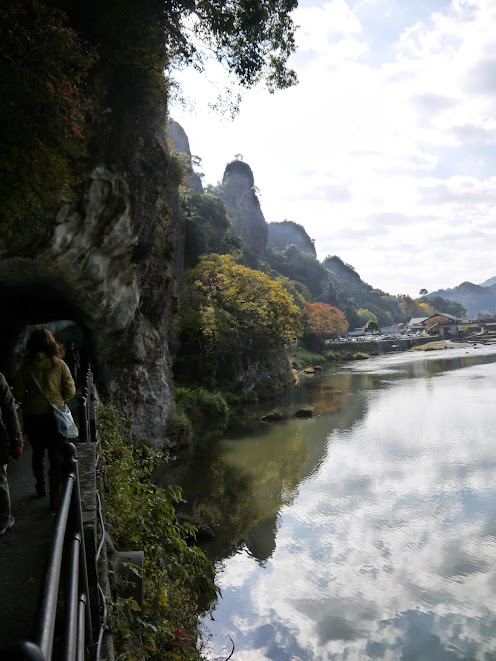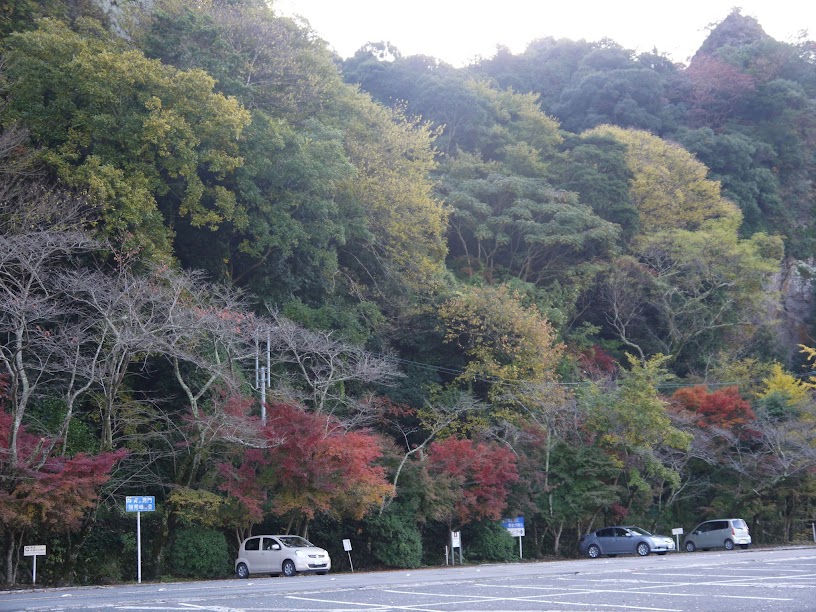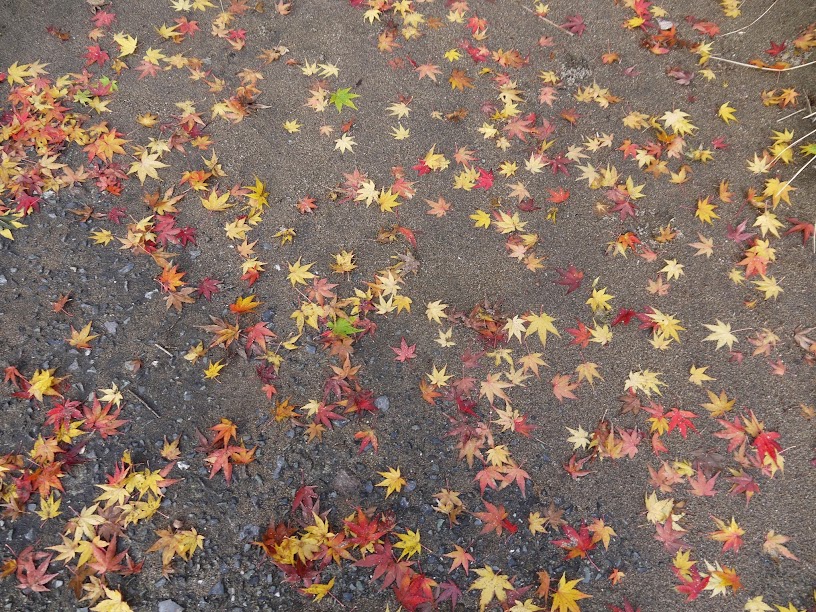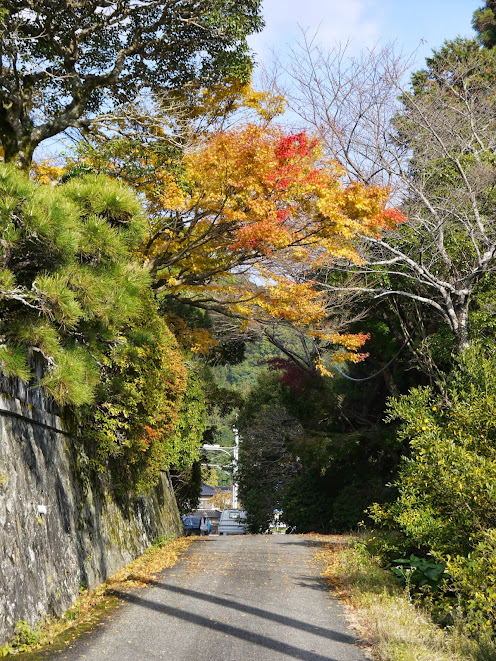18th November 2012
November is the month for red leaves viewing in Japan. Here's the
link for the red leaves calendar in Japan.
I had bad lucks when come to red leaves viewing. I went to Kyoto too early on 2011, the leaves still green. So, after moving to Oita, I told myself, I must view the red leaves in their prime in Oita. However, I was one week late, the leaves almost half gone! (-_-!!)
Anyway, here is my collection of photos on the red leaves in Nakatsu, Oita. Well, plus some photos on the attractions in Nakatsu.
On that fine morning, me and my friend went to Aonodomon 青の洞門. In front of the cave entrance, there is a big ginkgo tree (i think it is ginkgo due to the yellow leaves!). When autumn comes, the leaves will turn yellow and form a unique matching view with the cave entrance. Too bad, by the time I reached there, the tree already almost bare. Still, coupled with the fallen leaves on the road, not too bad!
 |
| Aonodomon 青の洞門 |
Aonodomon was digged by a monk called Zenkai 禅海和尚 using only a hammer and chisel. He did that because in the old times, people had to climb over the dangerous cliffs to reach a shrine. So, Zenkai dug a tunnel for the pilgrims to reach the holy place safely.
 |
| the Buddhist Monk - Zenkai 禅海和尚 |
 |
| the plate about the story of Aonodomon and Zenkai |
Below photos show the inside of the tunnel. Wow, digging the tunnel really needs a sheer amount of determination.
 |
| on the way to the tunnel's only opening |
 |
| View from the opening of the tunnel |
 |
| inside the tunnel |
Next, lovely photos nearby the Aonodomon.
 |
| autumn view in Aonodomon |
 |
| around the Aonodomon |
 |
| the cliffs that surround Aonodomon |
We walked around that area too. The weather was nice, not so hot and not so chilly. I was so excited when I saw a chili plant outside a house. Ah, chili is very expensive in Japan. Japanese called chili as 唐辛子, meaning something spicy from China, however, some said that the 唐 actually means foreign country. My friend tried to plant cili padi at her home (in Nakatsu) from the seeds, however, it just wouldn't bear fruits.
 |
| chili plant in Nakatsu in lovely red |
A lot of dropped leaves on the floor, it was very good looking.
 |
| maple leaves on the floor |
 |
| maple leaves on the floor |
 |
| autumn view |
 |
| Maple leaves 紅葉 |
 |
| ginkgo leaves |
Then, we crossed the road to see the Yabakei bridge. It is a tangible cultural heritage (有形文化財) of Oita Prefecture. Well, Japan really protects their old buildings or structures. I could always see the word '有形文化財' in Japan. They are very proud with their history and actually do something to preserve it. (Well, have something to confess here, sometimes, i just couldn't understand whey some particular buildings are declared as the cultural property!)
Anyway, it didn't stop us to snape photos of the bridge.
 |
| Yabakei bridge 耶馬溪橋 |
 |
| Yabakei bridge 耶馬渓橋 |
After walking around the area, we went back to Aonodomon. I was so surprised when I heard Cantonese. A full bus load of Cantonese speaking tourists got down from the bus. That was the first time I heard languages other than Japanese and English in Nakatsu. Well, it was easy to hear foreign languages in Japan, but only in famous tourist destinations. Mmmm, Oita Tourism Board is really doing a good job in wooing the tourists. Actually, before I moved to Oita, I have never heard of Aonodomon. However, it is a place worth visiting during autumn, much better than the Megane Bridge in Nagasaki, Hahaha!

















No comments:
Post a Comment